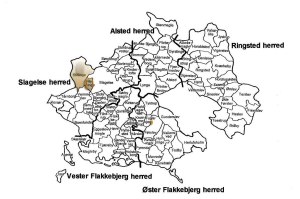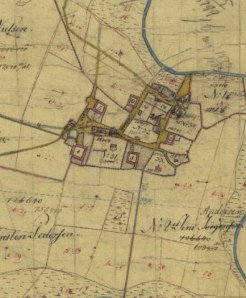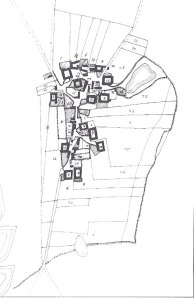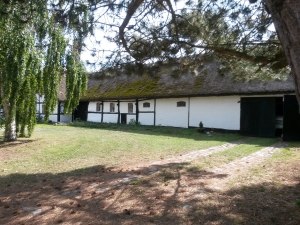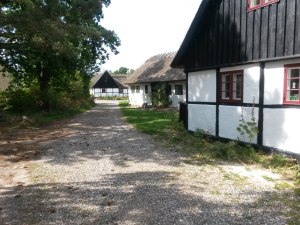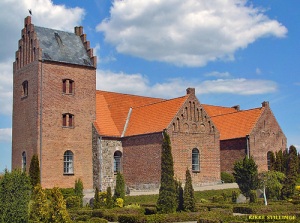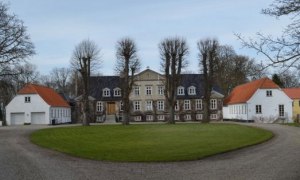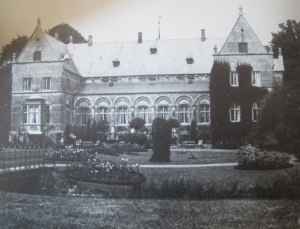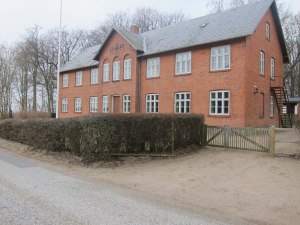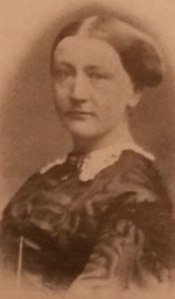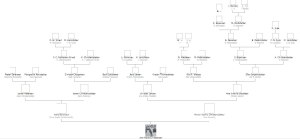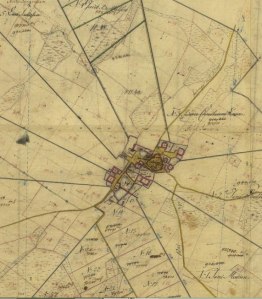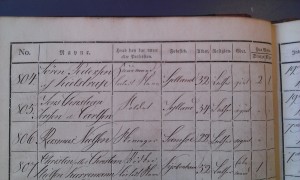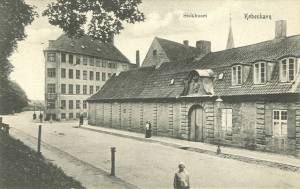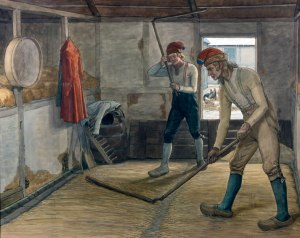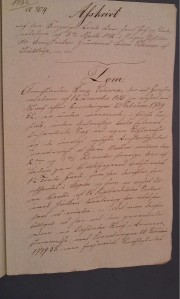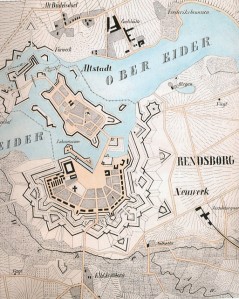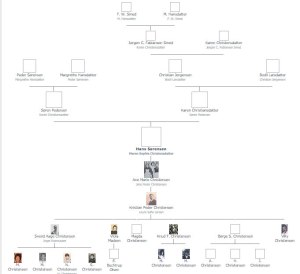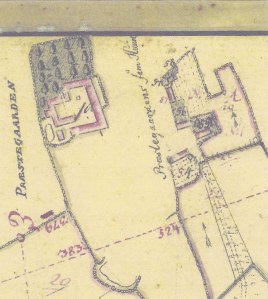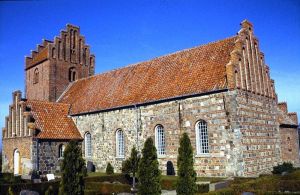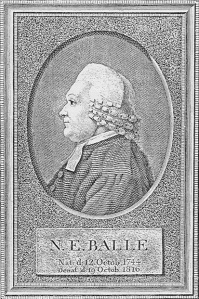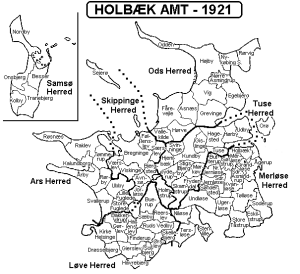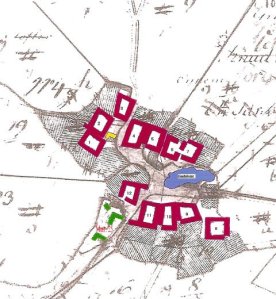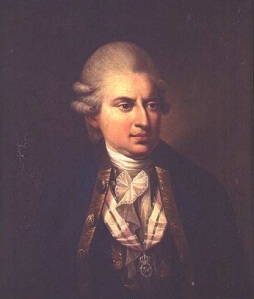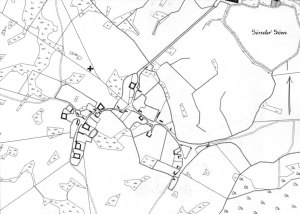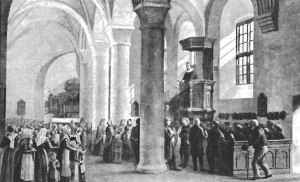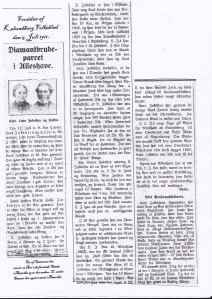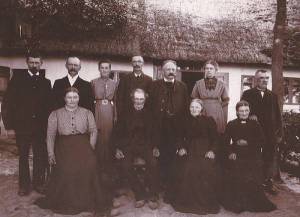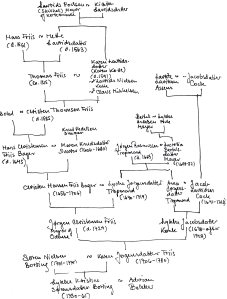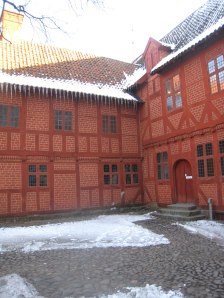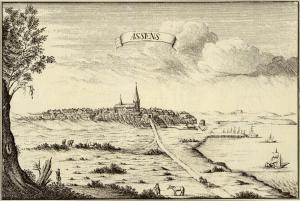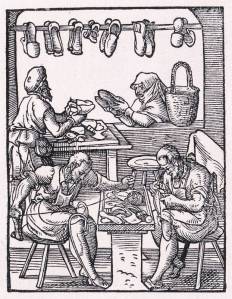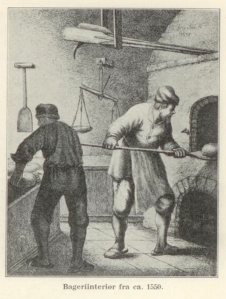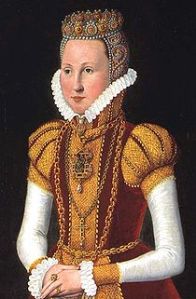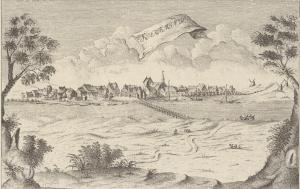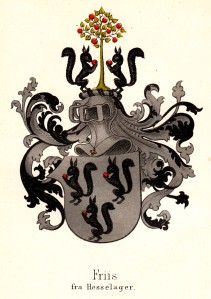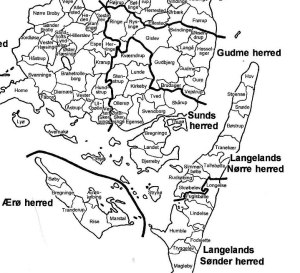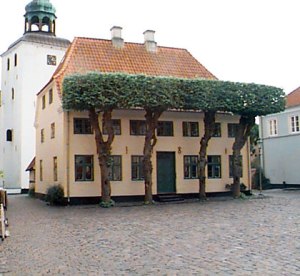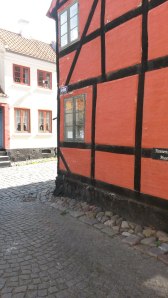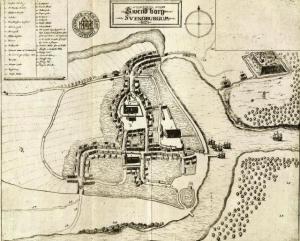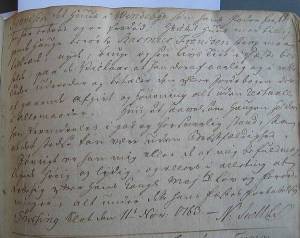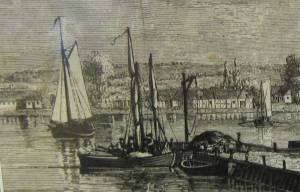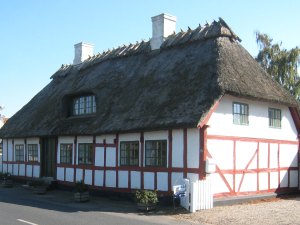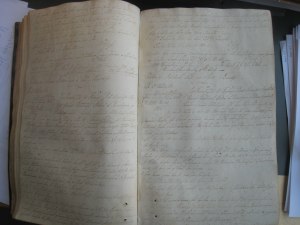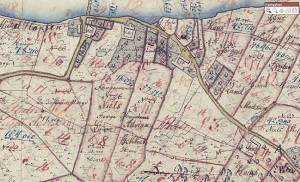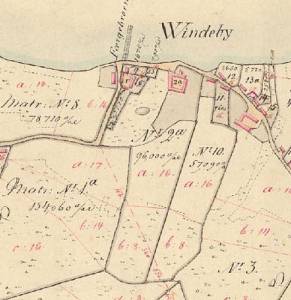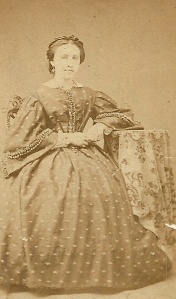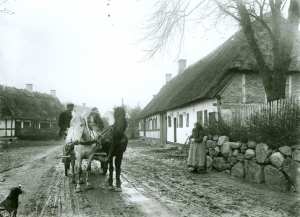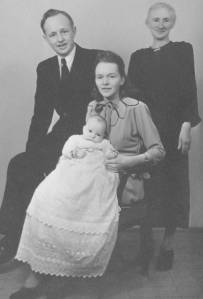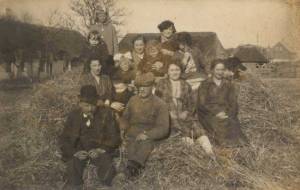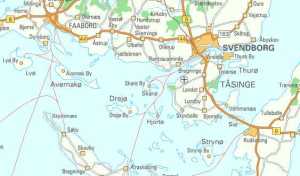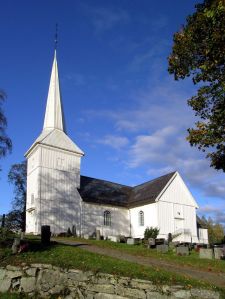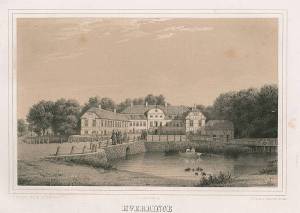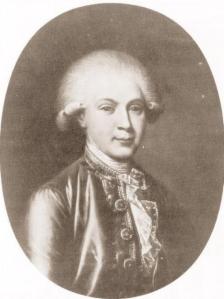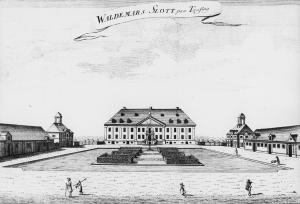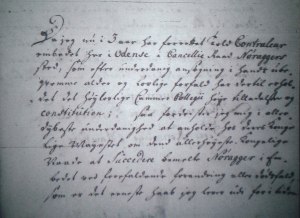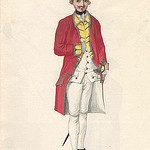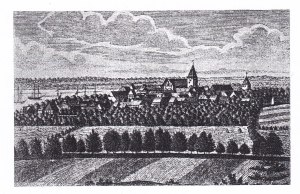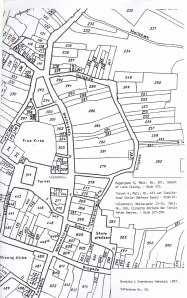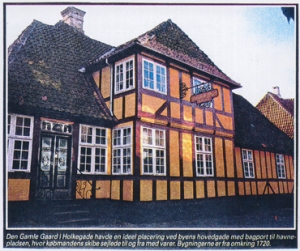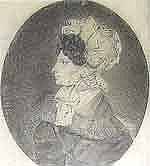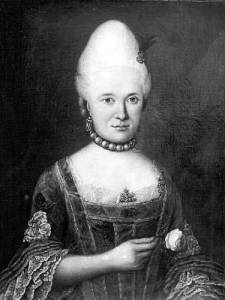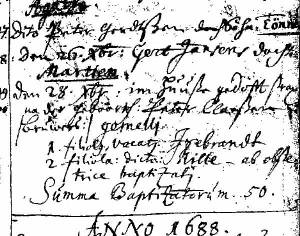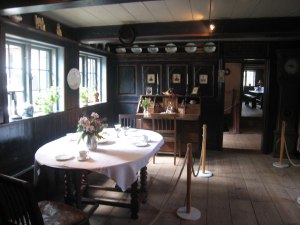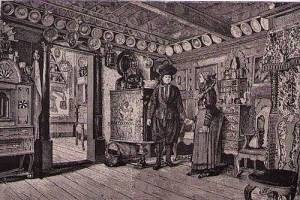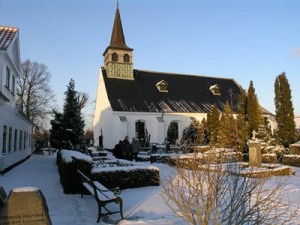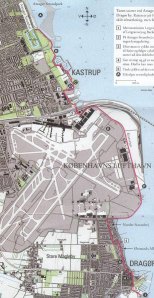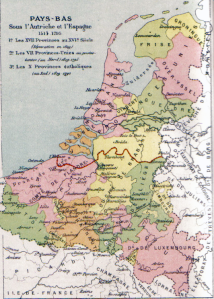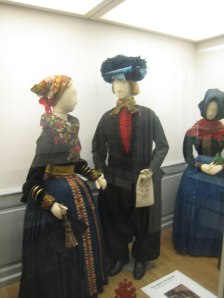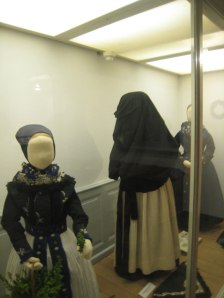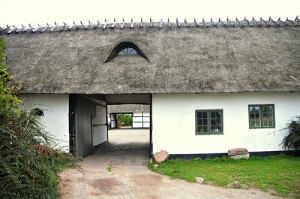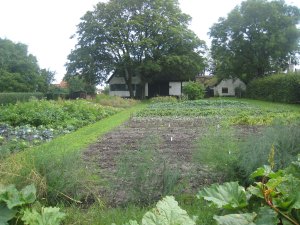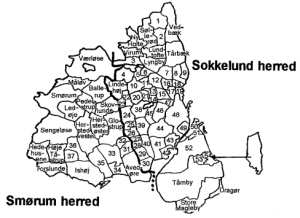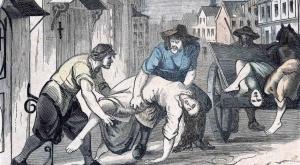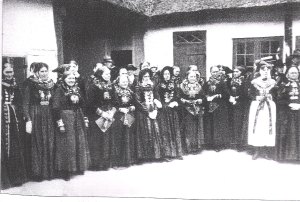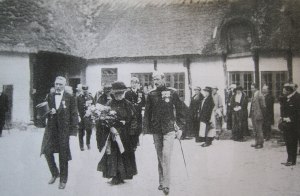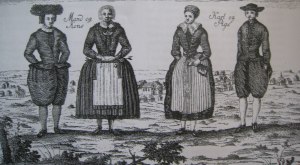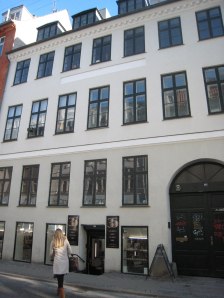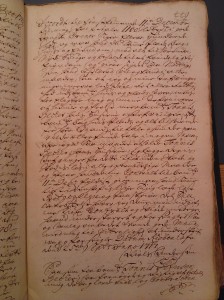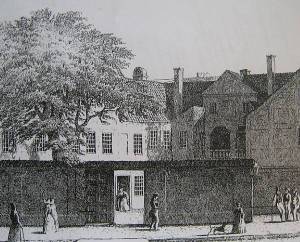A divorce in 1835, a life imprisonment (as described here), generations of illegitimate children, an early death and a widow supporting herself and young children as Milk Wife until she retired to the Benevolent Foundation was part of the life of some of my ancestors in Western Zealand
November 21, 1825 the five month pregnant Karen Christiansdatter married Søren Pedersen, who five years before had been accused of stealing
1 ½ ton of oat from the Manor of Valbygård.
Their first son Jørgen was born in March 19 the following year. In 1827 came Hans and Maren 1831. The daughter was three years old when Søren got its final verdict and a sentence as a fortress slave for life.
Karen’s marriage to Søren was dissolved by royal decree in February 1835 and later the same year she married Niels Jørgensen, who originally was from Copenhagen. The same year they had a son, Christian. In 1836, they moved to the neighboring parish of Gierslev and two years later had a daughter, Bodil Maria Nielsdatter. Karen died in 1847 at the age of 46.
Blacksmiths in the village of Næsby
Her great-grandfather Fabian Willadsen Smed (1700-80) and grandfather Jørgen Christian Fabiansen Smed (1731-75) were blacksmiths and her father, Christian Jørgensen (1759-1832) was a smallholder with land in Næsby in the parish of Kirke Stillinge. Due to lack of entries in the church records, the backgrounds of her mother, grandmother and great-grandmother are unknown. They were: Bodil Larsdatter (1770-1832), Karen Christiansdatter (1739-1814) and Mette Sophie Hansdatter.
Karen’s second son, Hans Sørensen (1827-1874), was my 3-x great-grandfather. In 1853, he had a daughter, Anne Marie, with Maren Sophie Christensdatter (1825-1879), who already had two illegitimate sons at the age of five and three. In the 1860 census, she lives with her three children in the workhouse in Kirke Stillinge. The two sons apparently later left the parish.
More Illegitimate children
Maren Sofie was also illegitimate. Her mother, Ane Kirstine Olsdatter, (1790 – 1852), first expounded Christen Jensen, a labourer with farmer
Niels Larsen in Fjenneslevmagle, as the father of a daughter and two years later she had a son, Christian Jacobsen, whose father I have not found.
In 1840. Ane Kirstine Olsdatter married Lars Jensen, but she is listed as a widow in the census 5 years later, living alone with her daughter at the island of Reersø. Five years later, she is found in the workhouse in Kirke Helsinge with the two year old “foster child” Christen Christensen, the illegitimate son of her daughter Maren Sophie.
Farmers at Reersø
Ane Kirstine came from a family of relatively affluent farmers in the island of Reersø, though the whole Western part of Zealand was still effected by the total devastation caused by the Swedish invasion in 1658.
At the betrothal in April 1755 and marriage on 13 June the same year of her grandparents Jørgen Espensen (1731-88) and Anna Kierstine Christensdatter (1736-1768), the vicar wrote in the church records:
“2. April I betrothed Jörgen Espensen and Anna Kirstine Christensdatter at Reersø. They were second=cousins and therefore showed a letter from the king that they were allowed to get married and they were not closer related than they had told in the Chancellery. The three old men, Hans Pedersen, Niels Poulsen and Peder Mortensen confirmed for me their truthful report in the presence of their masters and the church clerk. The same men were also the best men of the young people”
Jørgen Espensen was probably tenant of cadastral number. 38 B, Skansevej 13, where his son, Espen Jørgensen is listed as tenant in 1801. Today the farm is a thatched half-timbered house, consisting of three adjoined wings and a detached wing to the south.
Anna Kirstine Christensen died in 1768 after giving birth to twin girls. One died instantly and the other 10 years old.
Relations with the church clerk
Her father, Christen Nielsen Jyde (d. 1746) was possibly the church clerk or the tenant on the farm belonging to the church clerk office of the Dalby, not far from Reersø. 1719 he was married at the residence of Mr. Vulf to Maren Larsdatter of Reersø. Niels Christensen Vulf was former bailiff of the Manor of Sæbygård, and probably owner of the church of Kirke Stillinge, which belonged to the large estate, he owned in the area.
Her daughter with Jørgen Espensen, Ellen Jørgensdatter (1763-1830), was married to Ole Nielsen Westes (1762-1831), who came from Dalby. In the Notification of Deaths to the district bailiff of Løve Herred, they are named as paupers, and since they did not leave anything, there is no mention of any descendants.
Ole Westes was the son of Niels Westensen (1708-1782) and his second wife who married 1756. She was named as the “girl of the church clerk”, Maren Pedersdatter.” Her background has not been found.
Another illegitimate child
Ane Marie Christensen (1853-1938) had her daughter, Anna Kirstine Christensen on March 1, 1875 and was married to the father, Jens Peder Christensen (1850-1898) on 13 May 1876; he was a tenant of Bøstrup or Bødstrup Manor in the parish of Drøsselbjerg and lived in family house Bøstrupgård.
From about 1884, the family lived in Kirke Helsinge where the next six children were born. When the younger daughter, Martha Sophie, was born January 18, 1894 in Jorløse, the family lived in the Peat Bog House at the Manor of Vesterbygård and in 1898 they lived in Langemark in the Parish of Sæby.
Jens Peter died only 48 years old May 28, 1898 at Sæby County Hospital. At his death review in the Probate Protocol, it is noted that he was receiving “economic assistance for the poor” – probably because of his illness.
Dairy wife
Most of the children had heft the household, but Anne Marie was 45 years old and had to make a living for herself and the two youngest children aged 11 and 4.
In the census of 1901, it is stated that she had moved to the Manor of Katterup in 1898 where she works as a Dairy wife. The children, Niels Peter and Sophie, lived with her.
In Census 1906 Ane Marie is Dairy Wife at the Manor of Selchausdal, where she lived with “child” Martha Sofie Kristensen. They had moved to Selchausdal in 1903. From 1866 to 1914, the estate was owned by Michelle Christiane Agnes Charlotte Selchau.
The “Benevolent Foundation”
In 1916, she is listed as living “Benevolent Foundation” which Miss Michelle Selchau founded 1896 as a free residence for 12 elderly women from the parish. Former employees of the estate had preference.
According to the regulations, the inhabitants had to be single women and could stay there for the rest of life “if they did not make himself unworthy to do so. They must show decency and benevolence in mutual interaction and let the good spirit and good order rule. No one may have over-night guests, and they are not allowed to keep poultry and dogs and not leave the foundation more than one month at a time. The outdoor toilets had to be emptied every Saturday. The door should be locked at sunset, and everybody
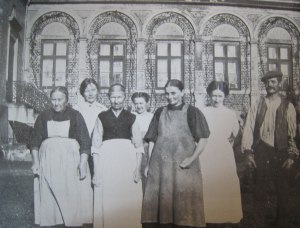
Some of the inhabitants of the Benevolent Foundation around 1930. One of them could be Ane Marie Christensen, but their names are not known.
are required to strictly comply with it. ”
Ane Marie is also listed at an inhabitant at the foundation in censuses of 1921 and 1925.
On her death the following entry was made in the church records:
“Widow receiving of Old Age Pension, Miss Selchaus
Foundation, Born in Kirke Helsinge March 20 1853, the daughter of Maren Sophie Christensdatter and the expounded father of the child Hans Sørensen of Krænkerup. Deceased spouse was labourer Jens Peder Christensen in Langemark at the time part of the Parish of Sæby parish.
Children and descendants
Ane Marie Christensen and Jens Peter Christensen had the following children:
-1) Anna Kirstine Christensen (1875-March 1)
-1) Kristian Peder Christensen (28 October 1876-1955), Bøstrup Manor, Drøsselbjerg Parish. Married to Laura
Sofie Larsen: www.familiekroeniken.dk/site/person.asp?person=41833
-1) Karl Valdemar Christensen (November 30 1877-). Married to Karen Marie.
-1) Christian Peder Christensen (February 9 1879-)
-1) Martha Sofie Christensen (February 2, 1881-before 1894)
-1) Laura Kristine Christensen (July 4, 1884 in Church Helsinge). Had an illegitimate child with stoker on the motor-ship Wilhelm Kolding, Ole Valdemar Hansen. On 28 May 1910, she married smallholder Vilhelm Hansen, Basnæs, Tjæreby. When they get their son, they lived at Tjæreby Mark.
–2) Ellen Marie Elisabeth Hansen (March 10 1907-). Born in Buerup (Sæby Parish)
–2) Agnete Hansen (November 5 1911-)
–2) Poul Take Frederik Hansen (b + d 1922)
-1) Niels Peter Christensen (April 16 1887-) (born in Church Helsinge)
-1) Martha Sofie Christensen (January 18 1894-) (born in Jorløse). Have not found her in the parish records of Buerup or Sæby.
Maternal grandfather grand parents
Ane Marie Christensen and Jens Peder Christensen was my great-grandparents: www.familiekroeniken.dk/site/person.asp?x=&person=46471
